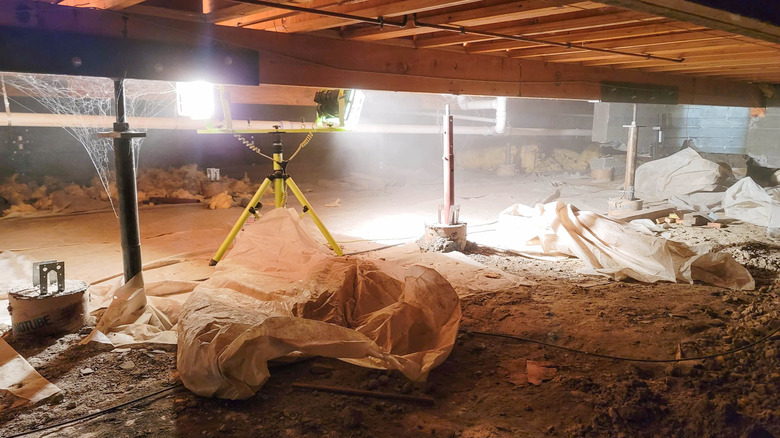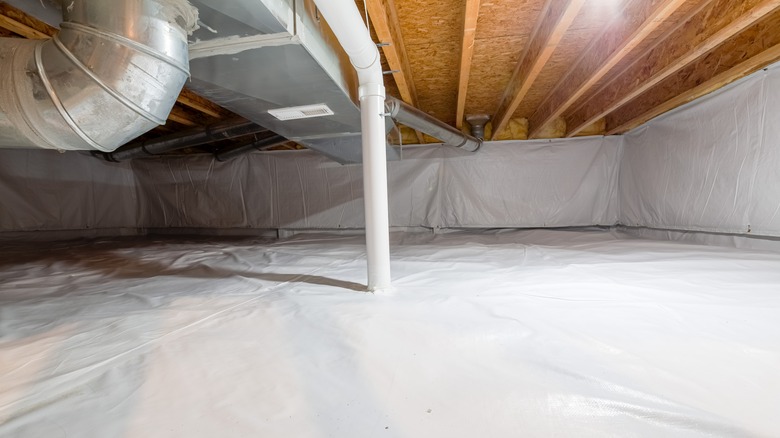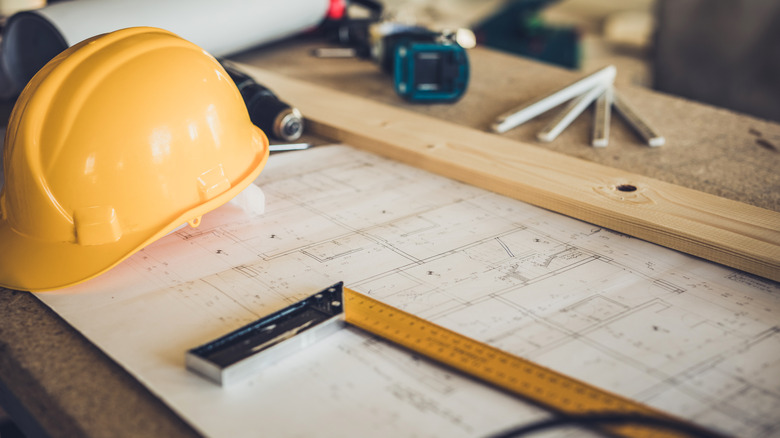What Is Crawl Space Encapsulation And Is It Smart To DIY?
Does your home have a crawl space? If so, you'll want to know about crawl space encapsulation. A crawl space is a hollow, unfinished area beneath some homes that is used to conceal electrical wiring, plumbing, and ductwork. These areas are an alternative to a basement and are usually less than 3 feet high. Crawl spaces offer easy access to plumbing, cooling, and other important systems in a home, so they can be beneficial during inspections or repairs.
If you have one, it's important to protect your home's crawl space from humidity and moisture. One way to shield the area is with encapsulation, which involves adding a heavy-duty water barrier, often made of polyurethane, to the floors and walls of the space to prevent moisture from entering and to benefit the home. Sometimes other protective features, such as a dehumidifier, are added during encapsulation as well.
It can be quite expensive to have a professional encapsulate your crawl space. The average cost is just over $15,000, but it can be as high as $30,000 in some areas. Up to 75% of the cost of this project is for the labor alone, while only 25% goes toward materials. So, you may be wondering, can the average homeowner encapsulate their own space to save money? If you are a highly-experienced DIYer, you may be able to take on this project. However, if you are less experienced, this is a job best left to the pros.
What are the benefits of crawl space encapsulation?
There are several benefits to crawl space encapsulation. It can increase the value of your home and make it more desirable for buyers, as it reduces the risk of damage to the crawl space and can make a home more energy-efficient. Additionally, while mold and mildew are common in crawl spaces because they are damp, encapsulation keeps the area dry and clean. This helps protect from excess moisture damage and can prevent problems like mold growth and wood rot. Also, with encapsulation, flooding is less likely.
Encapsulation is also an easy way to improve the air quality in your home. It lowers humidity levels, which helps reduce pollutants like mold — leading to better air quality throughout your house. This project can also help you save money on energy bills by improving air sealing. When air is sealed off from the outside, it leads to improved energy efficiency. Finally, encapsulation may help your heating and air conditioning (HVAC) system last longer. That is because the practice reduces humid air in the home. When there is less humidity, your HVAC doesn't have to work as hard, thereby reducing the wear and tear on the system.
Is it a good idea to DIY your crawl space encapsulation?
There are lots of instructional videos on how to encapsulate a crawl space that are easy to find online. However, this is not a DIY job for most homeowners. Unless you are a contractor or have done extensive remodeling on your home, it's best to leave this job to the professionals. Most people don't have the know-how or experience necessary to complete this project correctly, even with the help of these tutorial videos. It's also a physically-demanding project that involves specific tools that you probably don't already have on-hand. Also, in many areas, work on a crawl space often requires a permit. If you don't want to take on this job yourself, check out the Better Business Bureau to find a crawl space encapsulation professional near you. Look for companies that offer crawl space repair.
On the other hand, if you have a lot of experience in home remodeling and decide to tackle encapsulation on your own, here are some tips that you will want to keep in mind when completing this project. First, ensure you fix any moisture or mold issues before you begin. Second, use the right materials. Instead of using spray foam insulation, opt for a polyurethane vapor barrier. Fully encapsulate the entire area, sealing off any air gaps to prevent moisture, insects, and other pests from entering. Finally, make sure you install some kind of system to drain water.


